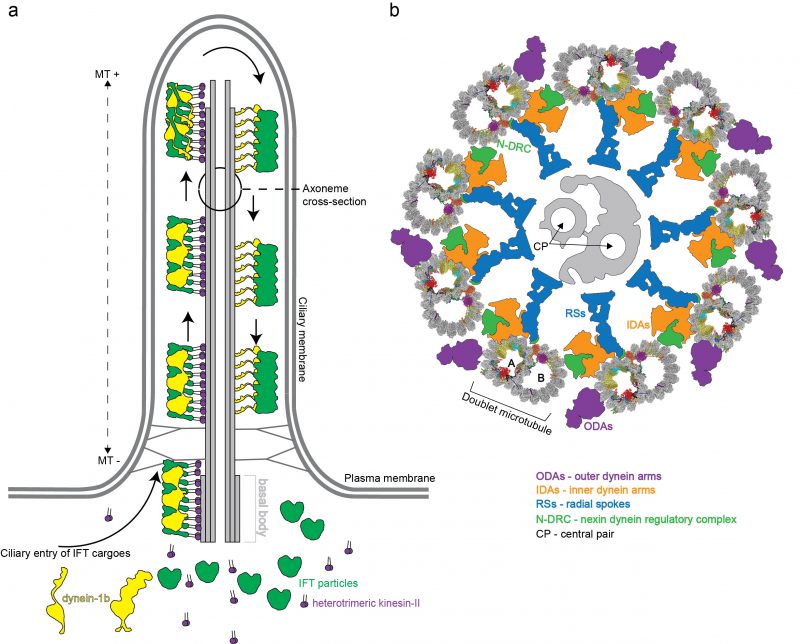Back to article: Structural insights into the architecture and assembly of eukaryotic flagella
FIGURE 1: Schematic representation of a cilium from Chlamydomonas reinhardtii. (a) Architecture of a cilium with a simplified scheme of the bi-directional intraflagellar transport (IFT) system trafficking proteins between the cilium and the cell body. IFT complexes (green) assemble into train-like polymers powered by heterotrimeric kinesin-II (purple) in the anterograde direction (base->tip). Inactive dynein-1b (yellow) is loaded as a cargo onto anterograde IFT ‘trains'. Once assembled and loaded with ciliary cargo, these trains are driven across the transition zone and Y-links (depicted as grey connections spanning from the ciliary membrane to the axoneme at the ciliary base) to reach the ciliary tip. Upon arrival at the ciliary tip, the IFT ‘trains' are re-modelled, turnover products are picked up and moved back again to the ciliary base by retrograde IFT powered by the now activated dynein-1b motor. (b) Schematic representation of an axoneme cross section of a motile cilium, which depicts the nine peripheral doublet microtubules (DMTs; PDB entry: 6u42) that surround a central microtubule pair (CP, shown in grey). The DMTs are connected though the nexin dynein regulatory complex (N-DRC, shown in green). Complexes responsible for ciliary beating are the inner- and outer- dynein arms (IDAs and ODAs; orange and magenta, respectively). The central pair is connected to the nine DMTs by radial spokes (RS; blue).

